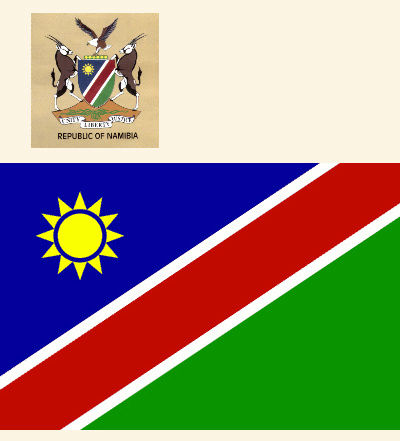Hunting Portal
Namibia
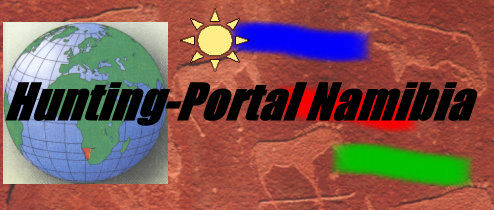

Rock paintings, the oldest of which date back to around 25,000 BC, bear witness to the first human settlements in what is now Namibia. are created. The famous rock paintings of Twyfelfontein are recent evidence of prehistoric settlement. Jaw fragments of a hominoid estimated to be around 13 million years old have been found in the Otavi Mountains. The first population groups to live here were the Bushmen (San) and the Damara. The cattle breeding Nama later settled in the south, moving north from areas below the Orange River.
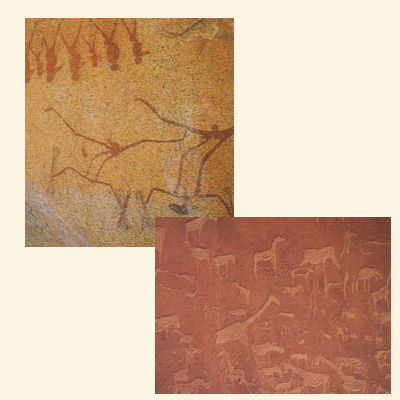
In 1486 the first Europeans landed on the coast of Namibia. The Portuguese Diego Cao erected a stone cross at his landing point, today's Cape Cross, as a sign of Portugal's occupation of the newly discovered territory. Various migration movements of African peoples led to the settlement of the Ovambo in the north, the Himba in the Kaokoveld and the Herero in the middle of the country. Bitter tribal wars broke out between the Nama and Herero. In the 19th century, numerous missionaries began their work in different areas of the country. Walvis Bay was used as a port by European seafarers, especially whalers, and was occupied by Great Britain in 1878. Numerous ships were wrecked on the Skeleton Coast; those who had escaped the wet element died of thirst in the Namib Desert, which stretched to the coast.
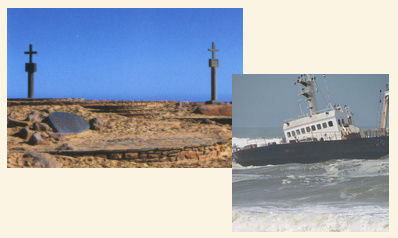
In 1883, the German merchant Adolf von Lüderitz acquired the "Angra Pequena" area from the Nama - later Lüderitz Bay - and set up a trading station there. A year later, this area was declared a protectorate by the German Reich and thus officially placed under protection. In 1890 the German protectorate becomes a crown colony. In the same year, the Heligoland-Zanzibar treaty between Germany and Britain also defines the borders of German South West Africa, which is extended to include the Caprivi Strip to gain access to the Zambezi. Windhoek became the seat of the German administration under Curt von Francois. The protection force was now constantly enlarged.
In April 1893 the first uprising of the Nama began under Hendrik Witbooi against the German protection troops. After heavy German losses, Major Leutwein defeated the Nama in September 1894, Witbooi recognized the protection treaties and committed himself to future military successes with his men capable of bearing arms for the German protecting power. This was followed by a period of peaceful coexistence.
More and more German traders and farmers penetrated the country, the development of German Southwest progressed. The natives had to fear more and more for pastures and water.
In January 1904, the Herero uprising began under Samuel Maherero in Okahandja. In the Battle of Waterberg, led by General von Trotha in August 1904, the Herero were defeated; three quarters of all Hereros lost their lives in this battle of annihilation. The Nama also rose up against the German troops at the same time without success. In 1907 the Herero and Nama tribes were all but destroyed. It was a quiet time until the start of the First World War. In 1907, the first animal reserves were created by the German administration, including the Etosha Park. In 1908 the first diamonds were found near Lüderitz; a major source of income for the country to this day.
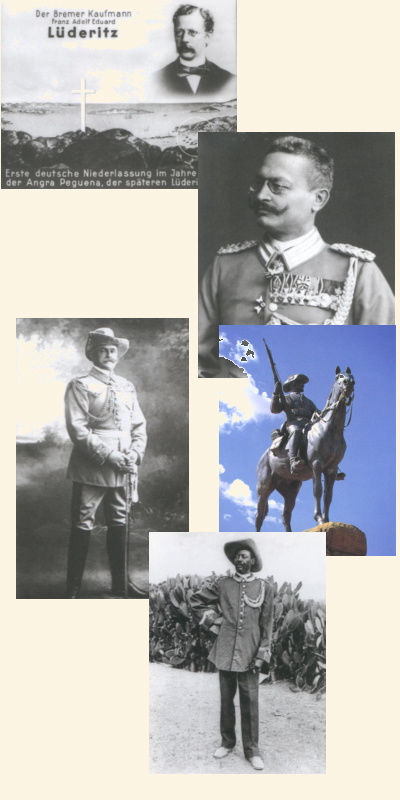
During World War I, South African troops occupied the German colony. The area is now under the League of Nations and South Africa is given the mandate to administer it. 6,700 Germans are able to stay in the country despite numerous expulsions. Also under the South African mandate there were some bloody rebellions of the oppressed black population. The number of the white population had roughly doubled by 1926, since many white settlers from South Africa also came to the country.
After World War II, South Africa refused to recognize UN (United Nations) jurisdiction and later transferred apartheid policies to South West Africa. International pressure leads to an independence plan for Namibia, but the 1978 elections are held without the leading liberation organization SWAPO and are therefore not recognised. SWAPO is waging a war of liberation against the South African occupation from neighboring Angola to the north.
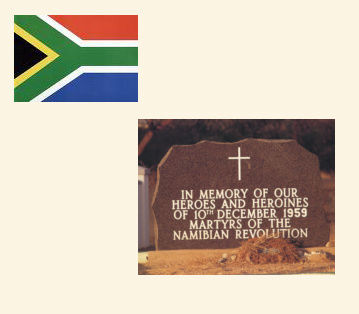
In 1989, elections to the Constituent Assembly were held, which produced SWAPO as the clear winner. On March 21, 1990, Namibia was the last African country to gain independence and SWAPO leader Sam Nujoma became the country's first president. In 1994 and (after a constitutional amendment that made this possible) again in 1999, Nujoma was elected President.
In the parliamentary and presidential elections in November 2004, SWAPO candidate H. Pohamba was elected Namibia's next president with more than 75 percent of the vote and was re-elected in the 2009 election.
In 2014, SWAPO won again. President became H.G. Geingob. In the election 5 years later, however, Swapo had to accept heavy losses for the first time in history and lost the two-thirds majority. Nevertheless, Geingob became president again.
